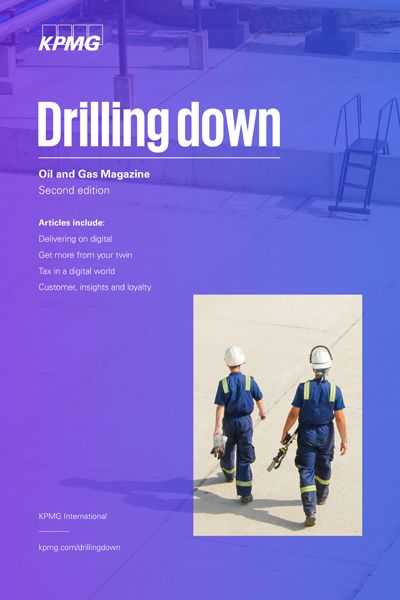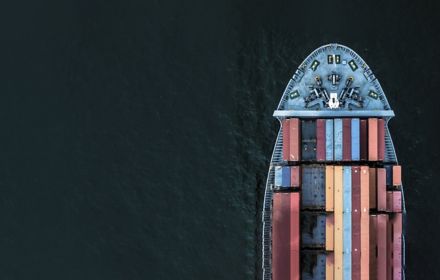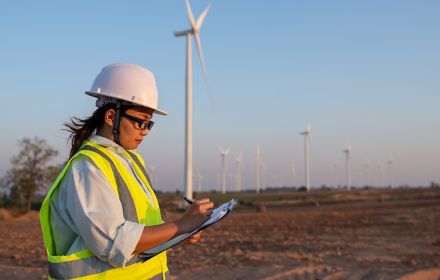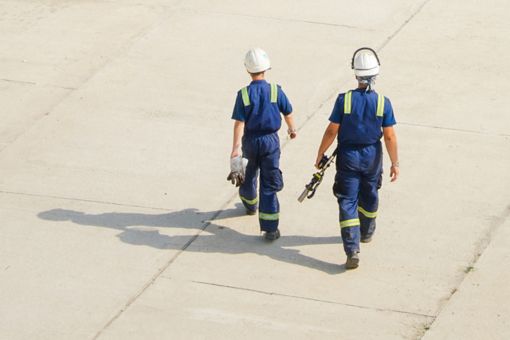The oil and gas sector has been virtualizing processes and assets for years. But are their digital twins delivering the value they could?
What it is and what it isn’t
You’re no stranger to digital twins. For decades, oil and gas players have created digital representations of assets and processes. Operators have been digitally simulating everything from offshore platform operations to subsurface reservoirs on the upstream side. Midstream players have been virtualizing pipelines and processing facilities. Downstream players use digital twins to monitor their operations and optimize maintenance schedules.
Digital twins are everywhere. And the term can be equally applied to a wide range of technologies and approaches. A digital twin could be a straightforward visualization technique – like a graph or a chart. Or it could be a highly immersive visualization environment (or HIVE) where operators can view, monitor and remotely control an asset or process. It might be a digital representation of an object, an asset, a process or a system. And it could be used for anything from training to operation.
What makes a digital twin valuable, however, is that it is connected to reliable and relevant data streams. The more ‘right time’, the better (live data may not always be what’s required). Regardless of their form or application, a digital twin should have a clear purpose, such as to allow decision-makers to reduce risk and increase business value. And to do that, it must be founded on quality data.

Your oil and gas business will likely use digital twins across the asset lifecycle. In the project design phase, your engineers and planners may use digital twins to conduct remote field walkthroughs or enhance spatial awareness and orientation. Your project managers are probably using digital twins to track execution progress. Operations leaders may use them to stress test cost and scheduling parameters or to conduct operator training.

In the operations phase, digital twins are helping reduce FTE requirements by allowing central remote operations, and by ensuring operators are well trained and informed. They are being used to monitor operations, components or flow streams remotely. They enable operators to optimize processes and equipment in real-time or to conduct emergency response. Maintenance schedules are being optimized. Downtime is being reduced. Risks are being better managed.
The big question, therefore, isn’t whether or not you need digital twins – it is whether your digital twins are delivering as much value as they could.
Finding the value sweet spot
Some digital twin use cases can deliver a bigger bang for the buck than others. If you operate a brownfield (i.e. already built) asset nearing its end of life, you may be challenged to justify the costs and disruption involved in creating a digital twin. Once you add up all the resources required to implement new technologies, new data management systems and new processes, you may find the business case doesn’t stack up.
If you are building greenfield (i.e. from scratch), however, the equation flips. Building a digital twin of a new offshore platform after the fact would be like telling an electrician not to wire a new house until the interior has been plastered and painted. The earlier in the process, the lower the cost and disruption, the greater the value over the lifecycle.
Oil and gas infrastructure is a complex network of assets and systems that come together to enable safe extraction, treatment and flow of resources. As the use of digital twins grows, they will extend beyond individual assets, and into the systems and system-of-systems they are part of. And this will release more value to the entire enterprise.
KPMG firms work suggests that the return on investment can also increase significantly depending on their application. Where a non-remote brownfield visualization application (like, for example, an operator training module) might deliver a 1:1 return, a remote visualization application could provide a 3:1 return (mainly by reducing the need for engineers or technicians to visit the site). An application that allows monitoring, simulation and optimization could provide a 6:1 return.
The ultimate value would be a digital twin that provides a highly immersive optimization environment of an integrated system-of-systems. In the oil and gas sector, that utopia might be an ecosystem of connected digital twins that provides visibility from upstream to downstream, across the end-to-end oil and gas operation.

Some cities are moving in that direction – using digital twins to optimize their assets and resources, to prioritize investments and to reliably monitor ESG impacts and goals by taking a ‘whole system’ approach.
Ultimately, the true value of a digital twin depends on the reliability and richness of the data that feeds it. More often than not, that means starting with the IT and OT data.
At the IT/OT interface
In the last edition of Drilling Down Magazine, we encouraged readers to focus on the security of their operational technology (OT) environments to reduce risk. When creating digital twins, however, you will likely want to integrate your IT within your OT. Without real, live operational data, your insights may be limited to what happened in the past; you won’t be able to influence the present or adequately predict the future.
Some old-school operators will shudder at the thought. In the past, common wisdom suggested the only way to keep OT data truly safe was in a walled garden – isolated from other networks. When hackers proved they could vault over the existing walls, most operators built taller walls. Now they are increasingly being asked to pull down those walls and to proactively integrate their data into the broader IT environment.
Even if they wanted to, integrating that data is a formidable challenge. For brownfield assets and systems, it would require significant changes to current data flows, processes and controls – both on the OT and the IT sides of the house. Security and governance would need to be updated and enhanced. New analytics technologies and capabilities would need to be bought, built or borrowed. In regulated areas, the transformation could be exceedingly complex.
Once again, greenfield sites may offer an easier route to value. In a greenfield situation, you can ensure that data security and integration are baked in the right from the start. You can test capabilities before they are applied in operational environments. You can plan for interoperability between IT and OT.
For some oil and gas organizations, integrating and analyzing IT and OT data may require quick progress on the digital transformation journey. It will also necessitate a greater focus on building the human skills and capabilities to turn that data and digital twin into tangible and measurable value.
Data meets experience
You can build a virtual model of almost anything. But it is only significant when you have the skills and capabilities to turn the data into value. You need to partner people with machines. You need to combine data with experience. You need to put the information into the hands of the people that can make decisions.
In part, this is about building strong partnerships between the business and IT. The business needs to articulate the need, quantify the value and develop the supporting capabilities. IT departments should ensure that best practices are shared, efficiencies are captured, and the technology is safe and secure. That requires a true partnership between the business (which includes operations, finance, supply chain and planning) and IT.
Together, they must think through the people, data, technology and system requirements that will need to be in place to ensure that the digital twin is aligned with and delivering on the business’ objectives. Then they will want to consider where they can demonstrate near-term value while sustaining business value and support. These partnerships and collaborations will become increasingly important as the sophistication and complexity of digital twins grow – from processes to assets to systems to systems of systems.
KPMG firms experience suggests that oil and gas companies will want to take a pragmatic and practical approach that can generate value, builds capability and enhances sophistication over time while simultaneously managing risk and improving control. Finding that balance will not be easy.
Key takeaways
“Could we generate more output power from our existing turbines?” a European energy company asked KPMG in the Czech Republic. The company had vast amounts of performance measurement data, market data and external source data available. But it didn’t want to risk shutting down one of its wind farms to conduct physical experiments. A digital twin would be needed.
KPMG in the Czech Republic developed digital twins using mathematical and AI prediction models to forecast the maximum achievable output power based on different wind turbine settings, wind strength and direction. That allowed the team to test whether different positioning of the nacelle and blade angles might deliver more output power.
The digital twin demonstrated that turbine performance could be improved by up to 2.9 percent – allowing each turbine to generate more electricity, worth up to EUR9,300 per year. With some 200 wind farms in this organization’s portfolio, that could add up to EUR2.2 million in additional income.
Sidebar: How a digital twin helped create EUR2 million in new revenue
“Could we generate more output power from our existing turbines?” a European energy company asked KPMG in the Czech Republic. The company had vast amounts of performance measurement data, market data and external source data available. But it didn’t want to risk shutting down one of its wind farms to conduct physical experiments. A digital twin would be needed.
KPMG in the Czech Republic developed digital twins using mathematical and AI prediction models to forecast the maximum achievable output power based on different wind turbine settings, wind strength and direction. That allowed the team to test whether different positioning of the nacelle and blade angles might deliver more output power.
The digital twin demonstrated that turbine performance could be improved by up to 2.9 percent – allowing each turbine to generate more electricity, worth up to EUR9,300 per year. With some 200 wind farms in this organization’s portfolio, that could add up to EUR2.2 million in additional income.
What does the future hold?
If the promoters of the metaverse are correct, every aspect of your life will soon have a digital twin (even you). And while the oil and gas sector has often led this area, most other business sectors are rapidly catching up. We are seeing increasing digital twin sophistication in infrastructure, government, transport, retail and consumer sectors.
This means that skills, capabilities, technologies and use cases are about to grow exponentially as companies and investors pour capital into research and development and as students and digital natives develop more experience using them. The network effect is strong with digital twinning – the more data, processes, assets and systems are tied together, the more value is generated. That is true at an asset, organizational and ecosystem level.
KPMG firms experience suggests that external pressures – like the Environmental, Social and Governance (ESG) agenda – will drive continued adoption and sophistication of digital twinning. Digital twins are an excellent way for investors and owners to monitor their critical ESG indicators. They also allow decision-makers to test and assess the impact of their decisions on ESG metrics before implementing them. As the drive to NetZero picks up pace and expectations rise, digital twins will play an essential role in the oil and gas response.
KPMG professionals advice to oil and gas leaders is to speed up the digital twin journey to capture the actual value that is available and build capability and capacity. Very soon, everything will have a digital twin. Having the appropriate technologies and capabilities will be key.
Key takeaways
Put integration over implementation. Start by thinking about what data, technologies and systems can be integrated rather than what new technologies should be implemented.
Understand the business objectives. Digital twins can do a lot of things and deliver on a wide range of objectives so make sure you have a good understanding of what you want to achieve.
Build partnerships to build value. Ensure that the business and IT is working closely together to mitigate the risks and maximize the value that you can create.
Be pragmatic in your approach. Build capabilities and sophistication over time, while simultaneously maturing your risk and cyber capabilities.
How KPMG can help
Regardless of the stage of your digital twin journey, securing support from a strategic partner can help to build and sustain an enterprise capability and can enable you to double down on the realization of benefits and keep your program on schedule.
KPMG professionals can help by augmenting your internal resources and delivering successful strategic digital twin programs. With knowledge of the possible pitfalls, and the vendor ecosystem, KPMG professionals can build complex analytical models, understand the socio-technical change impact and can articulate the value at within your organization.
Additional thinking
Get in touch
Stay connected
The email address you've entered is already tied to an existing account. Please enter your password to log in.
KPMG thought leadership is always available to our registered users
You’ve successfully logged in.
Please close this pop-up to return to the page.
Please provide the following information to register.

Follow us on LinkedIn
View regular energy content on our LinkedIn showcase page













